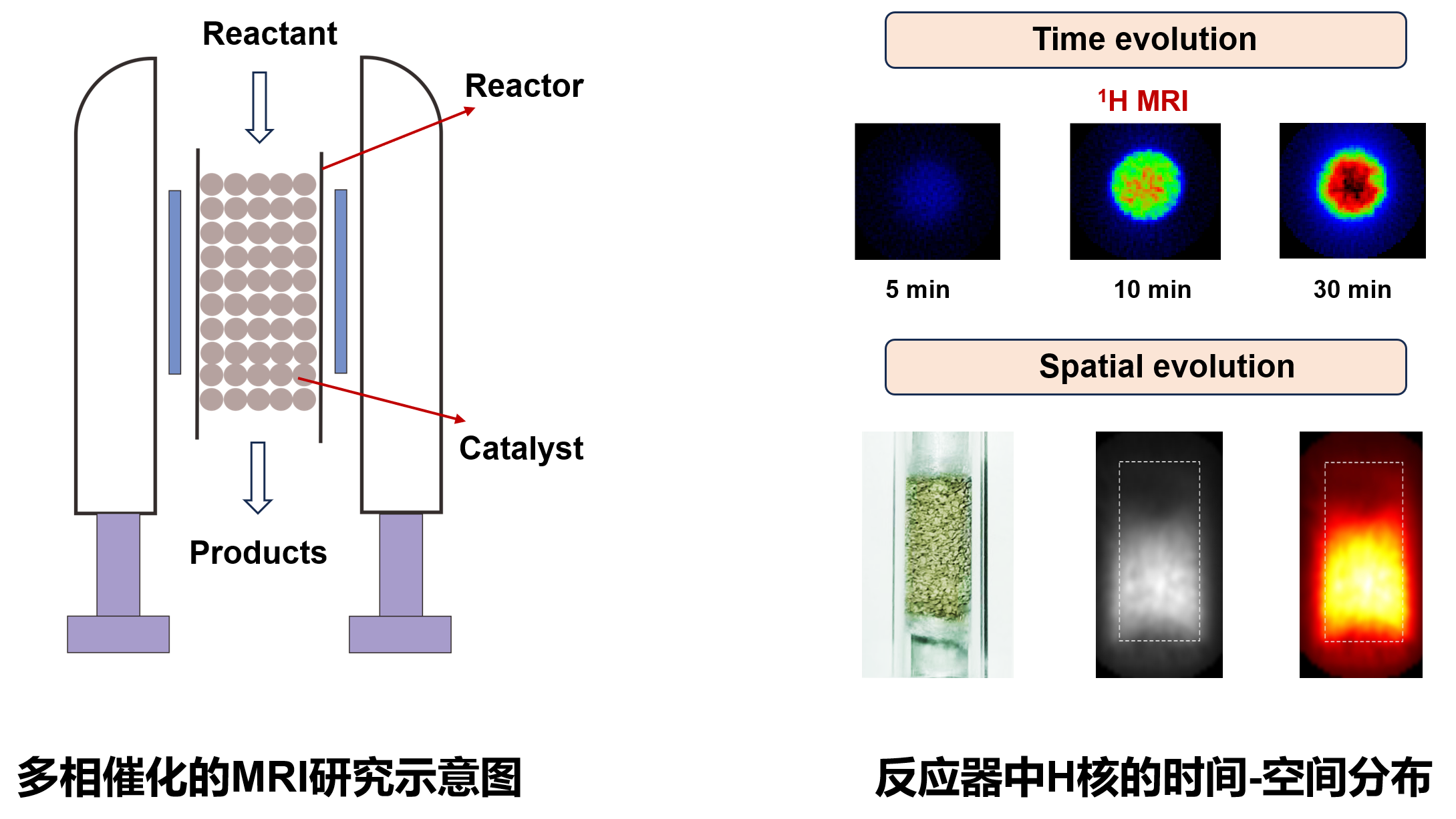Magnetic Resonance Imaging in Catalytic Reaction Systems
Magnetic resonance imaging (MRI) is employed to characterize heterogeneous catalytic systems, ranging from catalyst particles to pilot reactors. By integrating MRI with SSNMR, the goal is to capture and analyze the temporal and spatial distribution of heat, mass, and diffusion processes during heterogeneous catalytic reactions. This approach provides valuable experimental data that can inform the design of high-performance catalysts and the optimization of reaction processes.

1. Wang, C.; Zheng, M.; Hu, M.; Cai, W.; Chu, Y.; Wang, Q.; Xu, J.; Deng, F., Unraveling Spatially Dependent Hydrophilicity and Reactivity of Confined Carbocation Intermediates during Methanol Conversion over ZSM-5 Zeolite. J. Am. Chem. Soc. 2024, 146, 8688-8696.
2. Wang, C.; Chu, Y.; Xiong, D.; Wang, H.; Hu, M.; Wang, Q.; Xu, J.; Deng, F., Water-Induced Micro-Hydrophobic Effect Regulates Benzene Methylation in Zeolite. Angew. Chem. Int. Edit. 2024, 63 , e202313974.
3. Xu, R.; Wang, Q.; Wang,W.; Bao, Q.; Zhang, Z.; Liu, C.; Xu, J.; Deng, F., In situ NMR Imaging of Solvent Infiltration on γ-Al2O3 particles. Chem. J. Chinese Universities., 2023, 44, 20220587.



